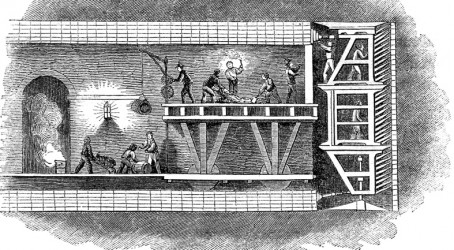Editor's Pick
Opened on 25 March 1843 the Thames Tunnel was described as the Eighth Wonder of the World.
During the 19th century London was a busy port so there was a growing business need to connect the docks on the north and south sides of the river Thames. A bridge across the river would restrict ships with tall masts, so Isambard Marc Isambard Brunel came up with an innovative solution – to build a crossing under the river.
Work on the tunnel, which was to span between Rotherhithe and Wapping, began in 1825. It was excavated using the newly invented tunnelling shield technology.
On the day it opened the tunnel attracted 50,000 visitors who paid a penny each. Within ten weeks of the opening over 1 million people (half of London's entire population at the time) had walked along the underwater passageway.
Five Thames Tunnel facts
- Length: 396 metres
- Width: 11 metres
- Tunnel depth: 23 metres
- Rectangular tunnelling shield allowed 36 miners to work at once
- Excavation rate: 3 - 4 metres per week

History of the Thames Tunnel
Work on the tunnel progressed slowly due to financial problems, poor working conditions, floods and fires.
The tunnel was constructed before London had a sewer system, so the water seeping through the walls was sewage-like, giving off methane gas. The fumes caused many workers to fall sick and the gas was frequently ignited by candles which started dangerous fires.
The tunnel flooded a number of times during the construction. During the second substantial flood, in 1928, six men lost their lives and young Isambard had to be rescued.
After a number of setbacks and breaks in construction the tunnel – hailed as a triumph of civil engineering – finally opened in 1943.
After years of spiralling building costs there was no money left to extend the tunnel entrance which would have allowed it to accommodate horse carriages. The tunnel was therefore open only to pedestrians and in time became more of an underground marketplace than a transport route.
In 1865 the tunnel was purchased by the East London Railway which wanted to use the tunnel to transport goods and passengers. The first train ran through the tunnel in 1869 and in 1884 the disused entrance shafts at Wapping and Rotherhithe were converted into stations.
The East London Railway eventually became part of the London Underground where it became the East London Line.
The tunnel closed during the work on the East London Line extension in 2007 and today the tunnel forms part of the London Overground network.